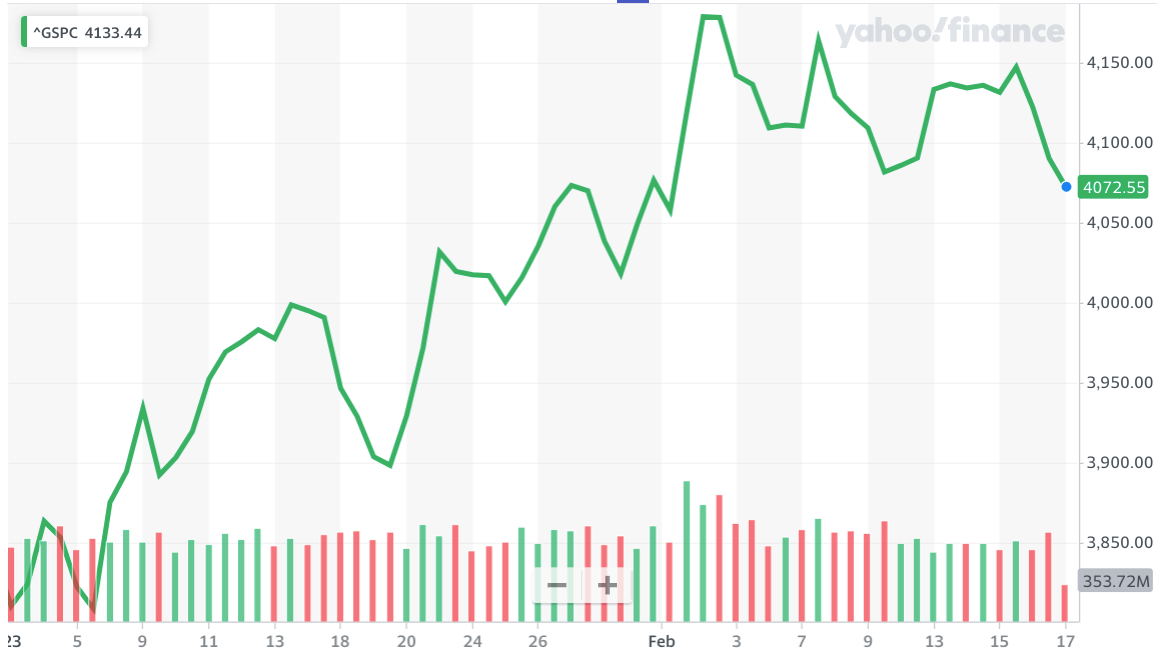A simple explanation for why the stock market isn't doing worse 📈
Resilient earnings amid tight monetary policy 💪
The stock market has had an impressive couple of weeks.
As of Friday afternoon, the S&P 500 was up 6% in 2023, and the index has spent almost all of this period higher than where it started the year. It’s now up 14% from its October 12 closing low of 3,577.03.
This comes amid expectations for an increasingly hawkish Federal Reserve. Following the strong January jobs report and robust January retail sales report, Wall Street firms — including Deutsche Bank, UBS, Bank of America, and Goldman Sachs — have warned that the Fed will hike interest rates by more than previously anticipated as it extends its fight to bring down inflation.
In other words, good economic news is bad news for inflation. And an increasingly hawkish Fed employing even tighter monetary policy is a headwind for financial markets.
But if the monetary policy backdrop is becoming more unfavorable for markets, then why have stock prices held up?
“[T]he only explanation that makes sense to us for this conundrum of ‘bad’ news and stable markets is that U.S. corporate earnings power remains resilient,” Nick Colas, co-founder of DataTrek Research, wrote on Thursday. “Yes, Q4 financial reporting season has been disappointing in terms of revenue/earnings beat percentages and amounts. But … the S&P 500 is still expected to earn $53.34/share.”
Colas shared this annotated chart of the S&P 500’s quarterly earnings per share (EPS) — actual EPS from the recent past and expected EPS for the near future.

The chart puts the estimated dip in Q4 EPS in perspective. And it doesn’t look so bad. Notably, quarterly EPS continues to trend — and is expected to continue trending — well above pre-pandemic levels.
“S&P earnings power is therefore 31% better than 2018–2019, so it makes some sense that the index is 38% higher than the 3,000 level of much of 2019,” Colas added.
As TKer readers know, earnings are the most important driver of stock prices in the long run. And coming into 2023, Wall Street’s top stock market forecasters were extremely skeptical about the strength of earnings, which had many warning that stock prices would do poorly early in the year.
It may still be the case that stock prices do indeed tumble in the short term. And it may also still be the case that expectations for earnings deteriorate much more significantly as the macroeconomic backdrop evolves.
Keep reading with a 7-day free trial
Subscribe to 📈 TKer by Sam Ro to keep reading this post and get 7 days of free access to the full post archives.


